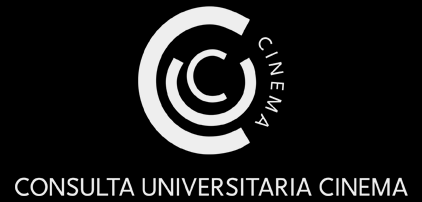In the last decades, the consolidation of a material culture studies paradigm, in the anthropological sphere, encouraged an interest in the material dimension of human activities (Lemonnier 2012). On the other hand, within media studies, the digital turn has drawn the attention of researchers to a variety of issues related to techniques and practices of cinematic experience (Elsaesser 2016). These two axes can converge and make a significant contribution to cinema studies, both in a historical and theoretical sense.
This thematic dossier proposes to look at objects and material actions that support film production and reception for the purpose of highlighting the agency of the objects and the complex interactions between materials, techniques and knowledge across different periods in film history. From this perspective, Portuguese cinema represents a very interesting case (Cunha 2018; Torgal. 2001; Sampaio. 2017; Vidal e Veloso 2016). Anchored to a stronger artisanal perspective in relation to other national cinemas, Portuguese cinema has always recognised the importance of materiality, being often thought of as a ‘materialist cinema’, despite the fact that studies have hitherto privileged the author dimension (Pierotti 2018). The ‘inter-artistic’ crafts have thus been put aside in favor of a conception of the director as being solely and exclusively responsible for the film. On the contrary, definitions like those of Kubelka, who defined cinematographic creation as ‘a tailor’s work in progress’ (Korossi 2016), acknowledge the action of these crafts, whereby the stone is molded into sculpture, shapeless fabric is cut into a costume, and the sounds are creatively arranged into new voices and silences…
Linking materiality to a small-scale production system, what interests us is, precisely, to understand the implications of events or aesthetic phenomena included in a film, and how they serve to make it into something new. The different types of relationships are thus relevant in the study of materiality, as they help to define the filmic aesthetic experience out of the dialectical forces that govern the ‘poetics of filmmaking’ (Bruno 2014).
The study of cinema materiality is committed to observe the various elements that come together to build the film as an artefact, with the aim of emphasising the creative processes involved (Salles de Almeida 2008). In 1989, film director António Reis launched the idea of an ‘aesthetics of the materials’ to highlight the construction of new and deep meanings out of the raw materials from which the movies are made (Lobo and Moutinho 1997). It becomes, then, possible to outline the genealogies and future projections of this ‘aesthetics of the materials’, as one identifies the multiple traces present, not only in the experiences related to Novo Cinema and the Portuguese School, but also throughout the material history (and the history of materials) of Portuguese cinema (Pereira 2016; Cucinotta 2018; Liz and Owen 2020).
By looking at Portuguese films from a material point of view, one can grasp their factual complexity and creative processes, as well as the human relationships the viewer needs to interpret and the material conditions of the physical-political landscape where they operate (Rampazzo Gambarato 2010). Along the way of Portuguese Novo Cinema, in particular, it remains latent the idea that it was necessary to cut off all ties from the past, in order to start a brand new theoretical and audio-visual wave that had no connection to the past (Araújo 2016, Areal 2011, Monteiro 2000). Insofar as this cut ever existed, what did it consist in? What (new) forms and materials did it give rise to or encourage?
Cinema materiality as a methodological framework has been at the heart of the Work-Group ‘Cinema and Materiality’ of the Portuguese Association of Researchers of the Moving Image (AIM). The topic will also be targeted in the international conference Materiality and Creative Processes in Portuguese Cinema, to be held at the University of Florence in October 2020. This thematic dossier falls within the same scope, following the materiality turn that has grown over the last years in film and media studies. Our goal is to publish a selection of original cutting-edge articles that address this subject in the field of Portuguese cinema studies.
Submissions may include, but are not limited to, the following topics:
- The ‘aesthetics of materials’ and its presence in filmic space;
- Genetic criticism and the genesis of the film: from production to material practices;
- New sources and documents for the study of materiality;
- Sound technologies: sound design, voices, noises, music;
- Visual technologies: film, photography, lighting, new formats and instruments;
- Materiality and/ in the video-essay;
- Know-how and gender identity: materiality, arts and techniques;
- Material culture and reception: the materiality of exhibition spaces and devices; spectatorship, digital and analogue materialities.
Deadline for article submission is: 15 January 2021.
All articles will undergo a process of selection (by the editors) and, then, blind peer review (by external reviewers). They must have between 6000 and 8000 words and include, in English and Portuguese: a title; an abstract up to 300 words; and 6 key words.
Before submitting your article, please check the Section Policies, Author Guidelines and the notes on Ensuring a Blind Peer Review.
To submit your article, click here.
For any queries, contact: aniki@aim.org.pt
Call for Essays





